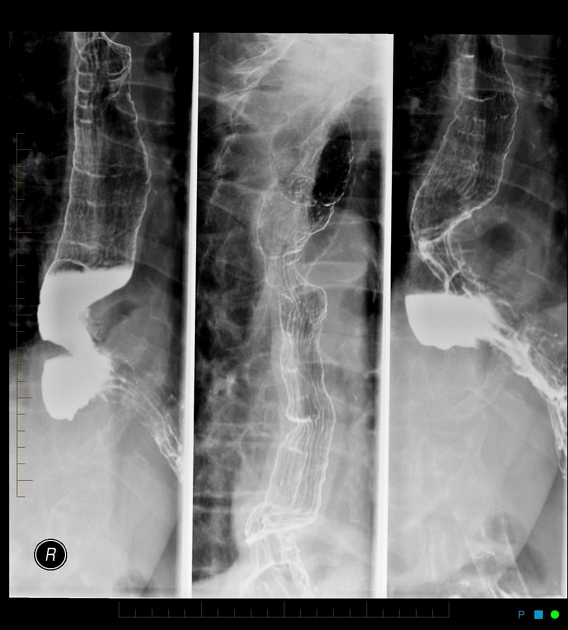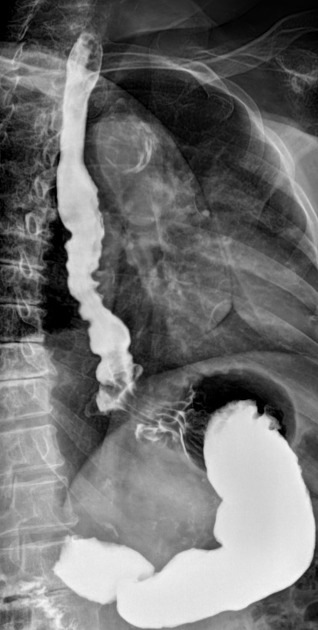Presbyoesophagus is term that has been traditionally used to describe the manifestations of degenerating motor function in the aging esophagus.
Presbyoesophagus remains controversial given it was initially described in elderly patients with significant co-morbidities (e.g. dementia, diabetes), and subsequent studies have described less severe changes and only minor differences in esophageal function in healthy patients less than 80 years old.
On this page:
Epidemiology
Presbyoesophagus is typically seen in patients older than 80 years old.
Clinical presentation
Patients may complain of dysphagia or chest pain, although most are asymptomatic.
Pathology
Various mechanisms have been proposed:
interruption of the reflex arc, perhaps from a central cause (e.g. ischemic stroke)
decreased sensitivity to distension and reduced secondary peristalsis
Radiographic features
Fluoroscopy
On barium swallow the following features may be seen 6,7:
decreased frequency of normal peristalsis
tertiary contractions (ranging from minor to severe)
esophageal dilatation
impaired lower esophageal sphincter relaxation
Differential diagnosis
Other motility disorders should be considered:








 Unable to process the form. Check for errors and try again.
Unable to process the form. Check for errors and try again.